A Guide to the Most Beautiful Dahlia Varieties to Grow in Your Garden
Published: September 8, 2025 at 9:33:47 AM UTC
Dahlias are the undisputed stars of the late summer garden, offering an incredible diversity of shapes, sizes, and colors that few other flowers can match. From dinner-plate sized blooms that command attention to delicate pompons that add charm to any border, beautiful dahlia varieties bring unmatched versatility to gardens and floral arrangements alike. Native to Mexico but beloved worldwide, these tuber-grown treasures reward gardeners with months of spectacular blooms from midsummer until the first frost.
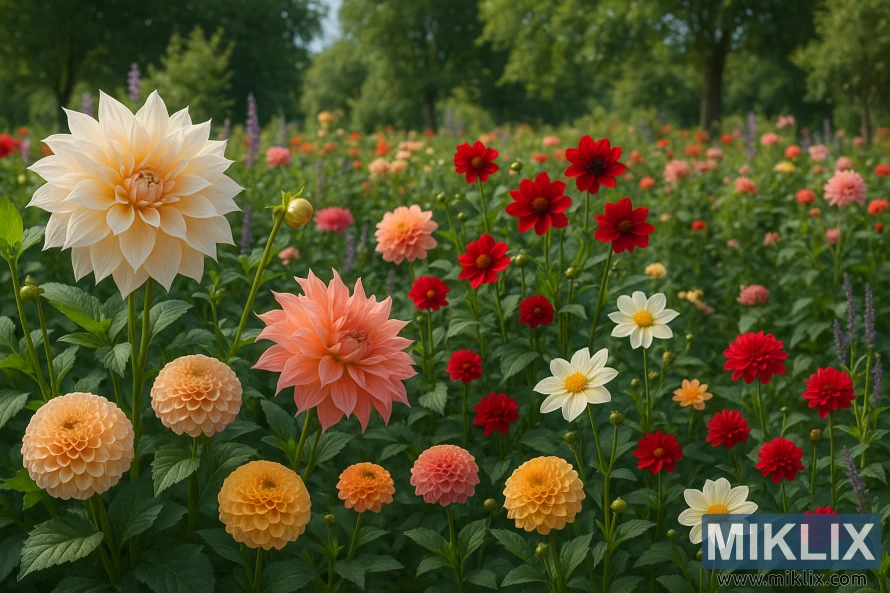
Whether you're a seasoned gardener or just beginning your journey, dahlias offer something for everyone. Their remarkable range of forms—from cactus to decorative, ball to waterlily—ensures there's a perfect dahlia for every garden style. In this guide, we'll explore the most stunning dahlia varieties that combine show-stopping beauty with reliable garden performance, helping you select the perfect blooms to transform your outdoor space into a vibrant paradise.
Did You Know?
A single dahlia tuber planted in spring can multiply into 6-12 tubers by fall, which you can divide and replant next season or share with friends. This makes dahlias not only beautiful but also an excellent investment for your garden!
8 Most Beautiful Dahlia Varieties for Your Garden
From romantic dinner-plate blooms to jewel-toned pompons, these stunning dahlia varieties offer exceptional beauty, reliable performance, and make wonderful additions to any garden. Each variety has been selected for its unique visual appeal, strong growing habits, and stunning flower production.
Café au Lait
Botanical Name: Dahlia 'Café au Lait'
Bloom Size: 8-10 inches (Dinner-plate)
Color: Creamy blush with hints of pale pink and peach
Height: 4-5 feet
The undisputed queen of beautiful dahlia varieties, Café au Lait produces massive, dinner-plate sized blooms in the most exquisite creamy blush color that resembles silk pillows. This dahlia's romantic, ethereal quality makes it a favorite for wedding arrangements and elegant garden displays. The subtle color shifts from cream to pale pink and peach create a sophisticated, heirloom appearance that pairs beautifully with almost any garden palette.
Growing Tips: Plant in full sun with well-drained soil. Stake early as the large blooms can become heavy. Café au Lait benefits from regular deadheading to encourage continuous flowering. Grows best in hardiness zones 8-11, but can be grown as an annual with tuber storage in colder regions.

Bishop of Llandaff
Botanical Name: Dahlia 'Bishop of Llandaff'
Bloom Size: 3-4 inches
Color: Vibrant scarlet red with dark foliage
Height: 3-4 feet
This dramatic dahlia creates an unforgettable display with its vibrant scarlet semi-double flowers that contrast magnificently against nearly black foliage. Part of the renowned "Bishop" series, this variety adds architectural interest and rich color to borders and containers. The dark, deeply cut foliage provides visual interest even before the blooms appear, making it a standout garden performer from early summer until frost.
Growing Tips: Thrives in full sun but tolerates partial shade. Plant in rich, well-drained soil and water consistently. The dark foliage absorbs heat, so mulching helps keep roots cool in hot climates. Performs well in hardiness zones 7-10.

Jowey Winnie
Botanical Name: Dahlia 'Jowey Winnie'
Bloom Size: 4 inches
Color: Sunrise pink with yellow streaks and lavender center
Height: 3-4 feet
This stunning ball dahlia produces perfectly formed blooms in a captivating blend of sunrise pink with streaks of pale yellow and a lavender center. The symmetrical petals create a mesmerizing pattern that draws the eye and makes this variety a standout in both garden beds and floral arrangements. A prolific bloomer with strong stems, Jowey Winnie provides abundant flowers from early summer through fall.
Growing Tips: Plant in full sun after all danger of frost has passed. Pinch early to encourage branching and more blooms. Regular feeding with a low-nitrogen fertilizer promotes flowering. Performs well in hardiness zones 8-10.
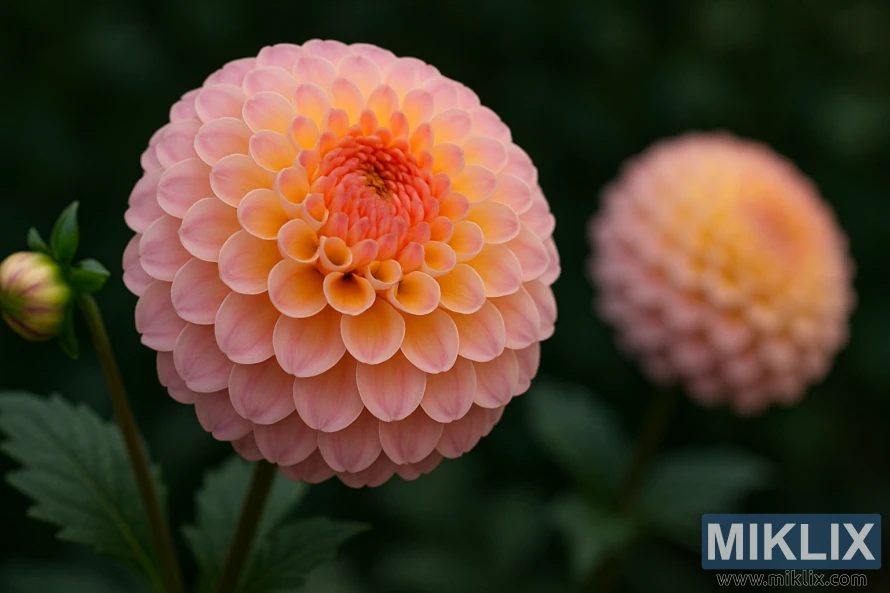
Labyrinth
Botanical Name: Dahlia 'Labyrinth'
Bloom Size: 7-8 inches
Color: Pink with streaks of pale rose and light apricot
Height: 5-6 feet
Labyrinth is a breathtaking dinner-plate dahlia that displays long, elegant petals in shades of pink with streaks of pale rose and light apricot. The intricate color patterns create a mesmerizing effect that changes as the blooms mature. This variety produces an abundance of large flowers on strong stems, making it perfect for creating dramatic garden focal points and spectacular cut flower arrangements.
Growing Tips: Requires staking due to its height and large blooms. Plant in a sheltered location to protect the large flowers from wind damage. Provide consistent moisture and fertilize regularly for optimal bloom production. Best in hardiness zones 8-10.
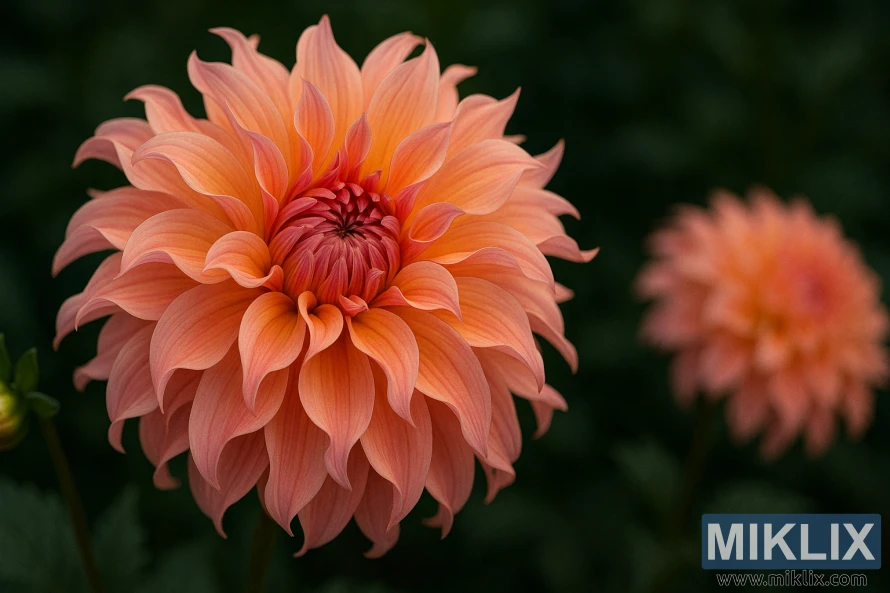
Small World
Botanical Name: Dahlia 'Small World'
Bloom Size: 2 inches
Color: Pure white
Height: 3-4 feet
Small World is considered by many to be the perfect white pompon dahlia. Its miniature ball-shaped blooms feature tightly packed petals that create a pristine, snow-white appearance. This prolific variety produces an abundance of flowers on long, strong stems, making it ideal for cutting gardens and adding bright accents to floral arrangements. The compact blooms are especially prized for wedding bouquets and boutonnières.
Growing Tips: Plant in full sun with well-drained soil. The more you cut, the more it blooms, making it perfect for cutting gardens. Regular deadheading encourages continuous flowering. Performs well in hardiness zones 8-10.
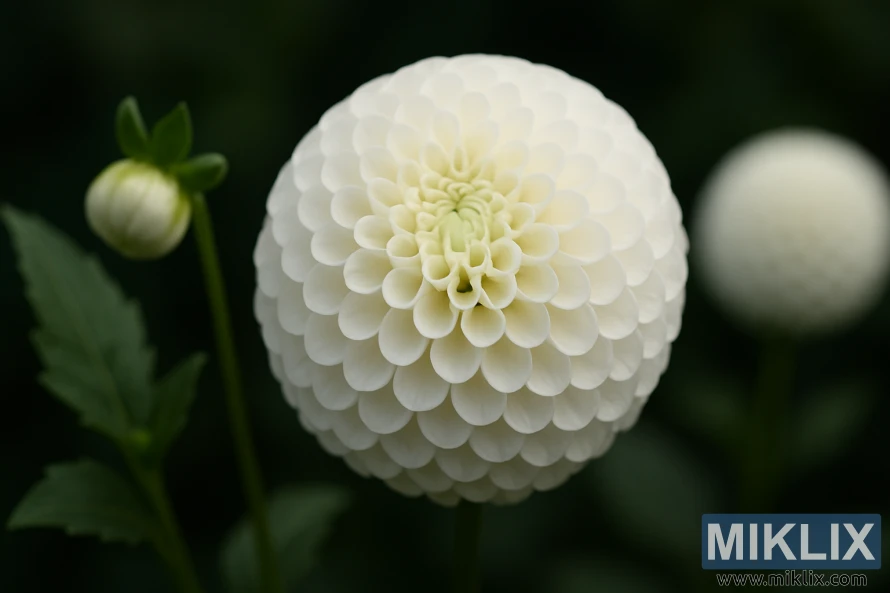
Crichton Honey
Botanical Name: Dahlia 'Crichton Honey'
Bloom Size: 4-5 inches
Color: Warm peachy-apricot
Height: 2-3 feet
Crichton Honey produces exquisite ball-shaped blooms in a warm, glowing peachy-apricot hue that seems to capture the golden light of late summer. The perfectly formed flowers sit atop sturdy stems, making them excellent for cutting and arranging. Despite its shorter stature, this variety is incredibly productive, offering a continuous supply of blooms from midsummer until frost.
Growing Tips: Pinch early to encourage branching and longer stems. Plant in full sun with consistent moisture. Benefits from a low-nitrogen, high-phosphorus fertilizer to promote abundant flowering. Grows well in hardiness zones 8-10.
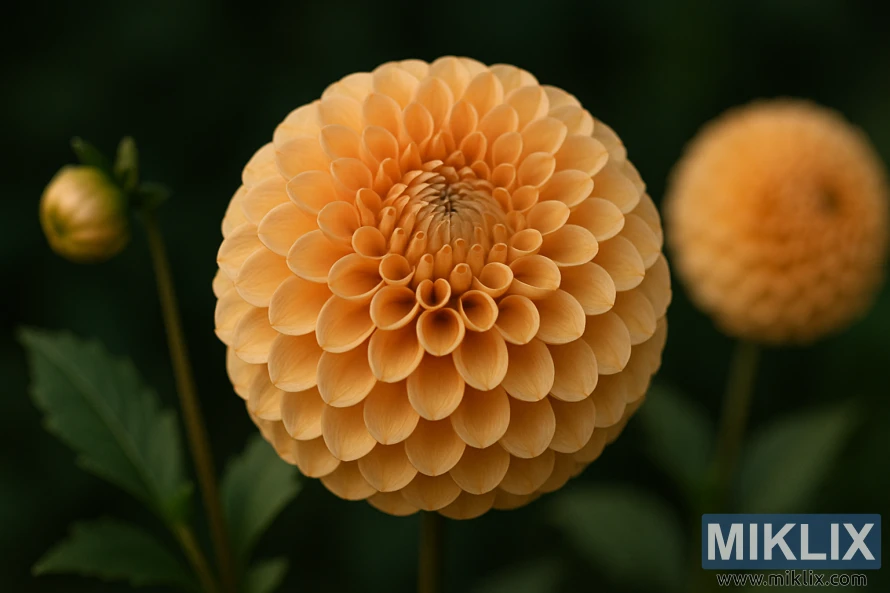
Platinum Blonde
Botanical Name: Dahlia 'Platinum Blonde'
Bloom Size: 4 inches
Color: White petals with buttercup yellow center
Height: 4-5 feet
This enchanting anemone-flowered dahlia features single white petals surrounding dense clusters of delicate buttercup yellow cylindrical blooms that create a pom-pom effect. The striking contrast between the crisp white outer petals and sunny yellow center makes Platinum Blonde a standout in any garden setting. A long-blooming variety, it provides visual interest from summer through fall.
Growing Tips: Provide support as plants can reach 5 feet tall. Plant in full sun with rich, well-drained soil. Regular deadheading extends the blooming period. Performs best in hardiness zones 8-10 but can be grown as an annual in colder regions.
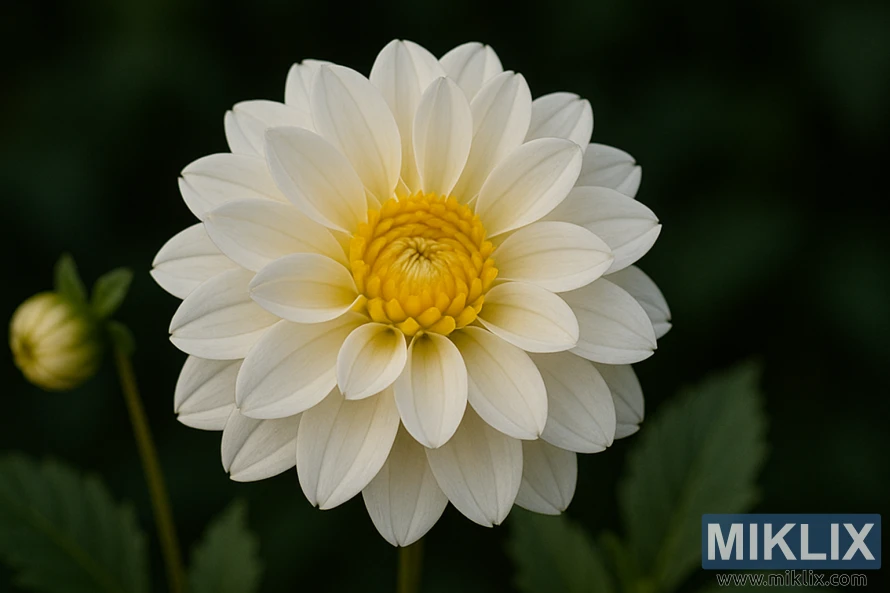
Happy Butterfly
Botanical Name: Dahlia 'Happy Butterfly'
Bloom Size: 4 inches
Color: Butter yellow and pink with raspberry center
Height: 4.5 feet
True to its name, Happy Butterfly brings joy with its upward-facing petals in a delightful blend of butter yellow and pink with a raspberry center. As the flowers age, the colors intensify, with petals developing deeper pink tones and striking fuchsia streaks. This waterlily-type dahlia is an early bloomer with excellent vase life, making it perfect for cut flower arrangements throughout the season.
Growing Tips: Plant in full sun after soil has warmed. Provide regular feeding with a balanced fertilizer. Staking is recommended to support the tall stems. Grows best in hardiness zones 8-10 but can be treated as an annual with tuber storage in colder regions.
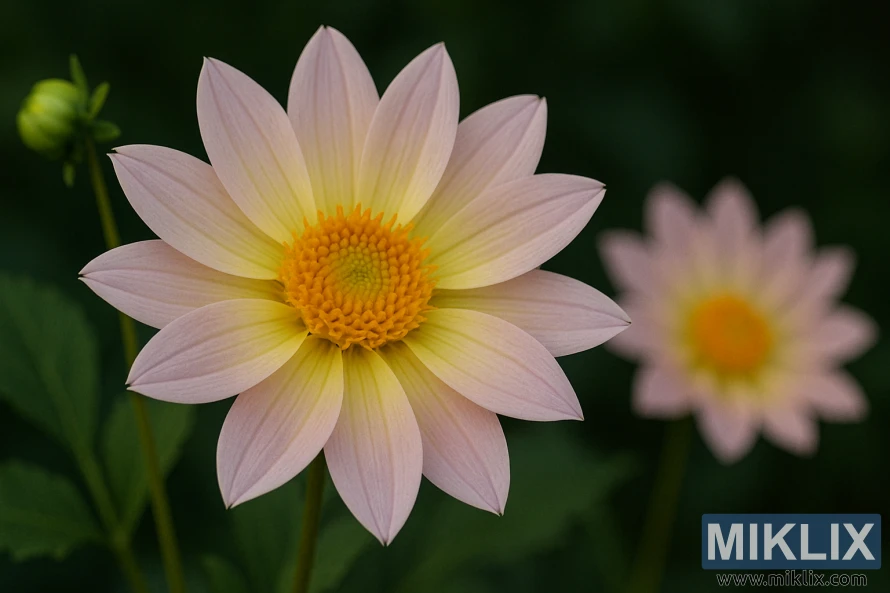
Design Tips for Creating Stunning Dahlia Gardens
Creating a captivating dahlia display goes beyond simply planting beautiful dahlia varieties—thoughtful design enhances their impact and creates a cohesive garden picture. Consider these professional tips to showcase your dahlias to their best advantage:
- Plant taller dahlia varieties like Café au Lait and Labyrinth at the back of borders to create depth and drama
- Use medium-height varieties like Jowey Winnie in the middle ground to bridge the visual gap
- Position compact varieties such as Crichton Honey at the front for easy viewing
- Incorporate ornamental grasses like Pennisetum or Miscanthus to provide contrasting texture and movement
- Add salvias, verbena, and cosmos as companion plants that attract pollinators and complement dahlia colors
- Consider color themes—try monochromatic schemes with dahlias in varying shades of the same color, or create contrast with complementary color pairings

Extend Your Dahlia Season
Plant dahlia tubers in succession, starting some indoors 4-6 weeks before your last frost date and planting others directly in the garden after frost danger passes. This staggered approach can extend your bloom season by several weeks!
For cutting gardens, plant dahlias in dedicated rows with 18-24 inches between plants to allow easy access for harvesting. Install support systems early—either individual stakes or a corral system with posts and twine—to prevent damage to developing plants. Mulch well to suppress weeds and retain moisture, which will help produce the strongest stems and most abundant blooms.
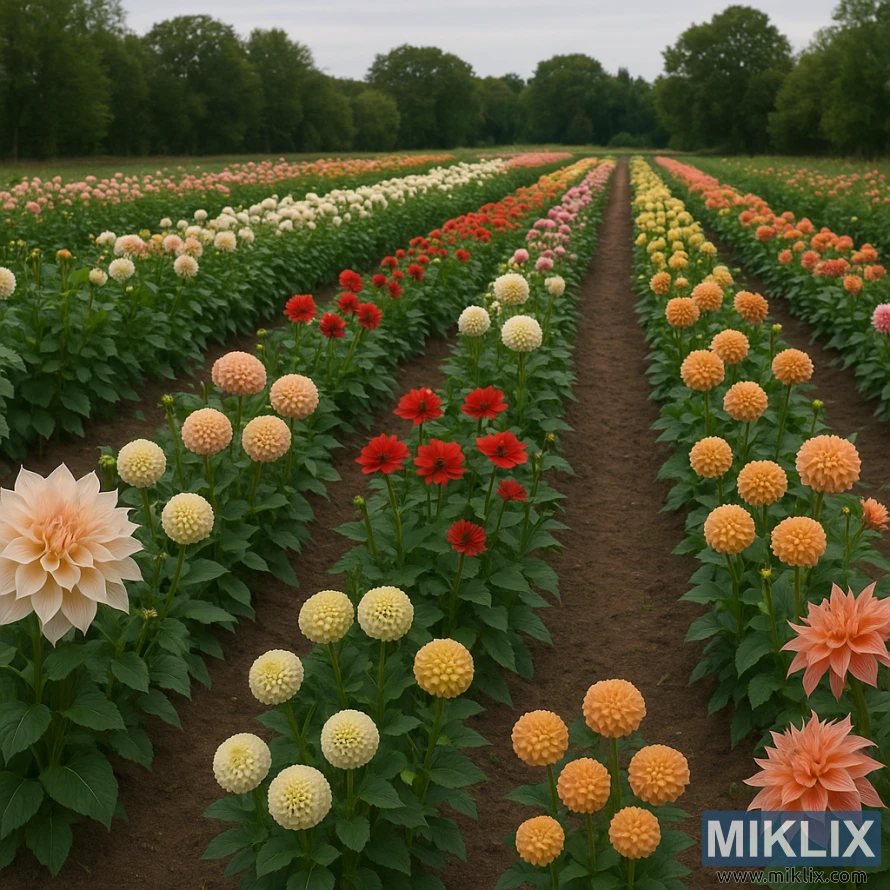
Frequently Asked Questions About Beautiful Dahlia Varieties
What is the most beautiful dahlia variety?
Beauty is subjective, but Café au Lait consistently ranks as one of the most beloved dahlia varieties for its ethereal blush tones and impressive size. Other highly prized varieties include Labyrinth, Linda's Baby, and Penhill Watermelon. The "most beautiful" dahlia often depends on your personal color preferences and garden style—some gardeners prefer the dramatic dark varieties like Black Narcissus, while others love the cheerful simplicity of ball dahlias like Jowey Winnie.
Do dahlias need full sun?
Yes, dahlias perform best with at least 6-8 hours of direct sunlight daily. In very hot climates (zones 9-11), they benefit from afternoon shade to prevent flower scorch. Insufficient sunlight results in leggy plants with fewer blooms. If your garden has limited full-sun areas, choose compact varieties that tolerate partial shade better than the larger dinner-plate types.
How do I overwinter dahlia tubers?
In zones 8-11, dahlias can often remain in the ground with good mulch protection. In colder regions, dig tubers after the first light frost has blackened the foliage. Cut stems to 4-6 inches, gently remove soil, and allow tubers to cure in a dry, well-ventilated area for 1-2 weeks. Store in slightly dampened peat moss, vermiculite, or sawdust in ventilated containers at 40-50°F (4-10°C). Check monthly for shriveling or rot, misting lightly if tubers appear dry.
Embrace the Beauty of Dahlias in Your Garden
The world of beautiful dahlia varieties offers endless possibilities for garden creativity and floral abundance. From the majestic dinner-plate blooms of Café au Lait to the charming pompons of Small World, these versatile flowers reward gardeners with months of spectacular color and form. Their diversity ensures there's a perfect dahlia for every garden style and color scheme.
As you plan your dahlia garden, don't be afraid to experiment with different varieties, colors, and forms. These generous plants will multiply year after year, allowing you to expand your collection and share with fellow gardening enthusiasts. The joy of growing dahlias extends beyond their beauty—it's about participating in a passionate community of flower lovers who appreciate nature's incredible diversity.
Further Reading
If you enjoyed this post, you may also like these suggestions:
- A Guide to the Most Beautiful Zinnia Varieties to Grow in Your Garden
- 12 Beautiful Coneflower Varieties to Transform Your Garden
- Top 15 Most Beautiful Rhododendron Varieties to Transform Your Garden
